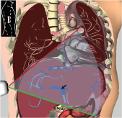The association between pulsatile portal flow and acute kidney injury after cardiac surgery : a retrospective cohort study
| dc.contributor.author | Beaubien-Souligny, William | |
| dc.contributor.author | Eljaiek Urzola, Roberto Antonio | |
| dc.contributor.author | Fortier, Annik | |
| dc.contributor.author | Lamarche, Yoan | |
| dc.contributor.author | Liszkowski, Mark | |
| dc.contributor.author | Bouchard, Josée | |
| dc.contributor.author | Denault, André | |
| dc.date.accessioned | 2021-08-10T13:48:58Z | |
| dc.date.available | NO_RESTRICTION | fr |
| dc.date.available | 2021-08-10T13:48:58Z | |
| dc.date.issued | 2017-11-22 | |
| dc.identifier.uri | http://hdl.handle.net/1866/25370 | |
| dc.publisher | Elsevier | fr |
| dc.subject | Cardiology and cardiac surgery | fr |
| dc.subject | Intensive care | fr |
| dc.subject | Heart failure | fr |
| dc.subject | Acute kidney injury | fr |
| dc.subject | Cardiorenal syndrome | fr |
| dc.subject | Point-Of-Care ultrasound | fr |
| dc.title | The association between pulsatile portal flow and acute kidney injury after cardiac surgery : a retrospective cohort study | fr |
| dc.type | Article | fr |
| dc.contributor.affiliation | Université de Montréal. Faculté de médecine. Département de médecine | fr |
| dc.identifier.doi | 10.1053/j.jvca.2017.11.030 | |
| dcterms.abstract | Objective:Venous congestion is a possible mechanism leading to acute kidney injury (AKI) following cardiac surgery. Portal veinflowpulsatility is an echographic marker of cardiogenic portal hypertension and might identify clinically significant organ congestion. Thisexploratory study aims to assess if the presence of portalflow pulsatility measured by transthoracic echography in the postsurgical intensive careunit is associated with AKI after cardiac surgery.Design:Retrospective cohort study.Setting:Specialized care university hospital.Participants:Patients who underwent cardiac surgery between May 2015 and February 2016 and had at least 1 Doppler assessment of portalflow performed by the attending critical care physician during the week following cardiac surgery.Interventions:The association between portalflow pulsatility defined as a pulsatility fractionZ50% and the risk of subsequent AKI wasassessed using univariate and multivariate logistic regression analysis.Measurements and Main Results:Thefiles of 132 consecutive patients were reviewed and 102 patients were included in the analysis. Significant portalflow pulsatility was detected in 38 patients (37.3%) in the week followingsurgery. During this period, 60.8% developed AKI and 13.7% progressed tosevere AKI. The detection of portalflow pulsatility was associated with an increased risk for the development of AKI (odds ration [OR] 4.31, confidenceinterval [CI] 1.50-12.35, p¼0.007). After adjustment, portalflow pulsatility and AKI were independently associated (OR 4.88, CI 1.54-15.47, p¼0.007).Conclusions:Assessment of portalflow using Doppler ultrasound at the bedside might be a promising tool to detect patients at risk for AKI dueto cardiogenic venous congestion. | fr |
| dcterms.isPartOf | urn:ISSN:1053-0770 | fr |
| dcterms.language | eng | fr |
| UdeM.ReferenceFournieParDeposant | 10.1053/j.jvca.2017.11.030 | fr |
| UdeM.VersionRioxx | Version acceptée / Accepted Manuscript | fr |
| oaire.citationTitle | Journal of cardiothoracic and vascular anesthesia | fr |
| oaire.citationVolume | 32 | fr |
| oaire.citationIssue | 4 | fr |
| oaire.citationStartPage | 1780 | fr |
| oaire.citationEndPage | 1787 | fr |
Files in this item
This item appears in the following Collection(s)
This document disseminated on Papyrus is the exclusive property of the copyright holders and is protected by the Copyright Act (R.S.C. 1985, c. C-42). It may be used for fair dealing and non-commercial purposes, for private study or research, criticism and review as provided by law. For any other use, written authorization from the copyright holders is required.








